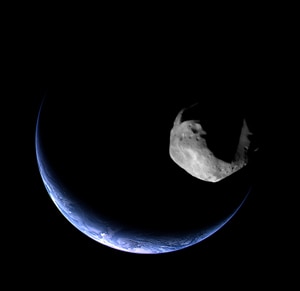Create a free profile to get unlimited access to exclusive videos, sweepstakes, and more!
An Asteroid's Parting Shot

As you may have heard, the asteroid 2012 DA14 silently glided past Earth on Friday, Feb. 15, 2013. Observations using radar have shown it to be an elongated rock about 20 x 40 meters (65 x 130 feet) in size. Normally such a small rock would evince little interest, but this one came close, missing the Earth by about 27,000 kilometers (17,000 miles).
It still didnât get very bright; it was invisible to the naked eye. But with digital cameras and dark skies, snapping pictures of it was a matter of knowing where to aim, something photographer Colin Legg knows very well. From Perth, Australia, he captured this lovely time-lapse video of the asteroid moving past Earth right at the time of closest approach, 19:24 UTC. And he captured more than just DA14; there are some other surprises in the video, too. Make sure to set it to full-screen.
You can see DA14 sliding through the video from top to bottom on the left side of the frame. But right after the video starts, a meteor plummets through the field of view, leaving behind whatâs called a persistent trainâa trail of vaporized rock that can glow for several minutes.Â
If you look carefully you can also see a several of tiny, faint dots traveling across the frame. Those are human-made satellites on different orbits, zipping around the Earth (I donât think any are airplanes, which would be tremendously bright in the video). There are thousands of them circling overhead, and on any given dark night you can spot several if you know where to look. There are plenty of websites that can do that; Heavens-Above is my favorite.
I love how serene the video is, even as objects criss-cross in every direction. The story back home on Earth was anything but, with the Chelyabinsk meteor and people fretting over various other fireballs in the sky. But here again is proof that these things happen a lot; the meteor Legg captured on video shows you that pretty much no matter where you look, something is burning up in our atmosphere. That bit of asteroidal material was probably no bigger than a grain of fine sand, but thereâs a lot more of that stuff than the bigger, scarier kind. 100 tons of material burns up over our heads every day. If you have a clear, moonless night, a big view of the sky, and a bit of luck, you might see a gram or two of it yourself.


























